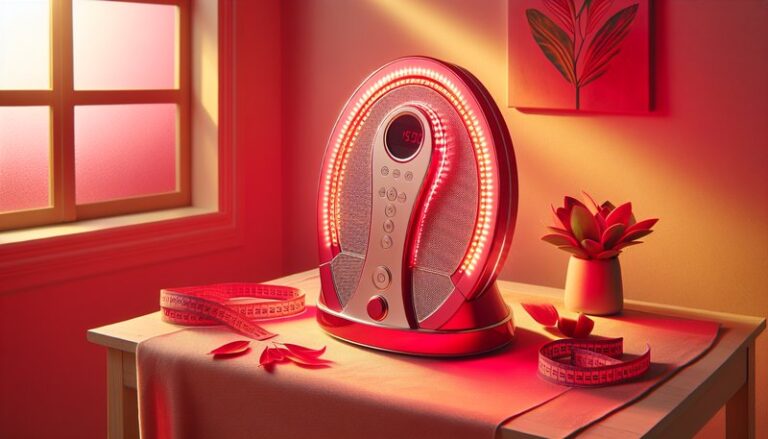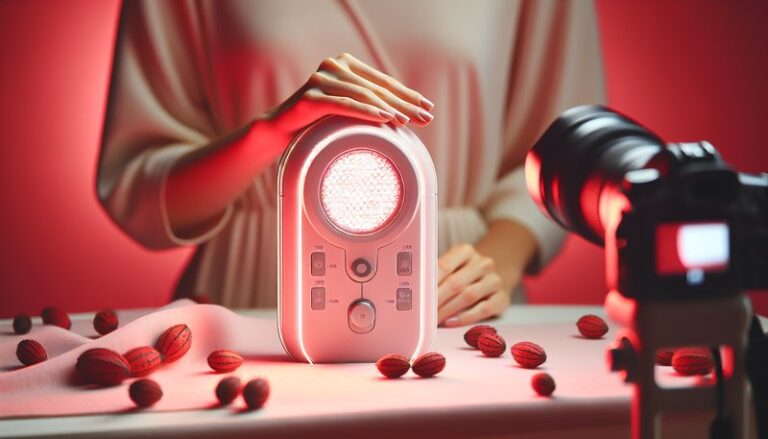Does Red Light Therapy Help Spider Veins?
Does Red Light Therapy Help Spider Veins?
Could a non-invasive treatment like red light therapy be the answer to reducing the appearance of spider veins?
This article explores the effectiveness of red light therapy as a potential solution for spider veins, a common yet often frustrating condition for many individuals. We will delve into how this treatment works, its benefits, considerations before trying it, and explore some alternatives.
Discover our thoughts on Does Red Light Therapy Tan?
Key Takeaways
- Red light therapy may improve circulation and reduce inflammation, potentially aiding in the treatment of spider veins.
- While non-invasive, it’s crucial to consider individual skin types and overall health before starting treatment.
- Alternatives such as sclerotherapy and laser therapy may offer immediate results for treating spider veins.
What is Red Light Therapy?
Red light therapy (RLT) is a treatment that utilizes specific wavelengths of light, typically in the red or near-infrared spectrum, to stimulate cellular processes in the body. This technology is often employed for various cosmetic and therapeutic applications, from skin rejuvenation to pain management.
When applied to the skin, red light penetrates the epidermal layers and is thought to boost collagen production and enhance blood flow, making it a candidate for helping with conditions like spider veins. Spider veins, characterized by thin, web-like patterns on the surface of the skin, result from a variety of factors, including genetics, hormonal changes, and prolonged sitting or standing.
What are the Benefits of Red Light Therapy?
Red light therapy offers several benefits that may contribute to its effectiveness in treating spider veins. The following points outline some key advantages:
Enhanced Circulation
Red light therapy is believed to improve blood circulation. By improving the delivery of oxygenated blood to the tissues, it may help alleviate the pressure that contributes to the formation of spider veins.
Reduced Inflammation
The therapy can also have anti-inflammatory effects, helping to reduce swelling and discomfort associated with spider veins. This aspect can provide both cosmetic and symptomatic relief.
Non-Invasive Treatment
Unlike other medical interventions for spider veins, red light therapy is a non-invasive option. Patients may prefer this approach due to its minimal risks and avoidance of needles or surgery.
Check out the details in Is Red Light Therapy Effective for Neuropathy?
Skin Rejuvenation
Red light therapy is known to promote collagen and elastin production in the skin. Healthier skin can enhance the appearance of areas affected by spider veins and improve overall skin tone.
Is it Possible to Treat Spider Veins with Red Light Therapy?
Yes, it is possible to treat spider veins using red light therapy, but results can vary widely among individuals. Various studies suggest that while red light therapy can improve blood flow and skin health, it may not completely eliminate spider veins.
What are the Advantages of Using Red Light Therapy?
- Ease of Use: Treatments can often be done at home using handheld devices, or at a clinic, making it accessible.
- Minimal Discomfort: Most patients report little to no pain during treatments, unlike some traditional methods to treat spider veins.
What are the Disadvantages of Using Red Light Therapy?
- Variable Effectiveness: Some patients may see minimal results, while others may not see any changes.
- Time Commitment: Consistent treatments over an extended period may be necessary to notice significant improvements.
What are the Things to Consider Before Trying Red Light Therapy?
Before starting red light therapy for spider veins, consider the following factors:
Skin Sensitivity
Individuals with sensitive skin should consult a dermatologist before undergoing treatment, as their skin may react differently to the therapy.
Underlying Conditions
Consult with a medical professional to ensure that there are no underlying health conditions that could be exacerbated by this treatment.
Type of Device Used
The effectiveness can depend heavily on the specific device used. Research and choose a reputable source of red light therapy equipment or treatment services.
What are the Alternatives to Red Light Therapy for Spider Veins?
If you’re seeking other options for spider vein treatment, consider the following methods:
Sclerotherapy
This minimally invasive procedure involves injecting a solution directly into the affected veins, causing them to collapse and fade away over time.
Laser Therapy
Laser treatments use concentrated light beams to target and destroy spider veins with little damage to the surrounding skin.
Endovenous Laser Therapy (EVLT)
This method uses laser energy to close off larger veins beneath the skin, which can help redirect blood flow and reduce the appearance of spider veins.
Conclusion: Is it Recommended to Use Red Light Therapy for Spider Veins?
Red light therapy may offer some benefits for those struggling with spider veins, particularly in improving skin health and circulation. However, its effectiveness can vary and should not be considered a guaranteed solution. For significant or immediate changes, other methods like sclerotherapy or laser treatments may yield faster results. Consulting with a healthcare professional is always recommended to determine the best individualized treatment plan.
Frequently Asked Questions
Can red light therapy completely eliminate spider veins?
While red light therapy can improve the appearance of spider veins by enhancing skin health and circulation, it typically does not completely eliminate them.
How long does a red light therapy session last?
Sessions usually last between 10 to 30 minutes, depending on the size and number of areas being treated.
Is there any downtime after red light therapy?
No significant downtime is associated with red light therapy. Patients may resume regular activities immediately after treatment.
How often should I undergo red light therapy sessions?
Frequency can depend on individual needs, but many practitioners recommend sessions 2-3 times a week for optimal results.
Are there any side effects of red light therapy?
Red light therapy is generally considered safe with minimal side effects. However, some individuals may experience temporary skin redness or irritation.




